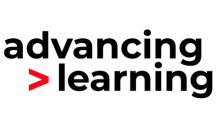The students we are teaching today will work in a world that we cannot comprehend. The tasks they will carry out and the strategies and techniques needed are beyond our understanding. But we do know that our students will depend on their skills to be successful. Including collaboration, communication and problem solving.
Students can no longer depend on being good at science or literacy alone they require a cross the board understanding of different concepts covering a vast wealth of knowledge. STEM lessons promote the content and the skills. Students who learn from a STEM curriculum develop transferable skills with an enhanced use of science literacy and mathematics. Promoting critical thinkers while encouraging experimentation, resilience and the use of technology. It is key in the support of the next generation of innovators and creators. The majority of career opportunities in the future will be in medical science, systems software development and biomedical engineering it is believed.
In truth STEM workers will play a key role in the sustained growth and stability of the future global economy. STEM students learn from an interdisciplinary approach across all key areas. This ideology presents some challenges for establishments who would like to implement the approach. The main problem is that there are simply not enough teachers who are trained to plan and deliver STEM lessons. Many teachers appreciate the approach and have an understanding of the strategy but are not confident in the design or delivery. STEM teaching is becoming the elephant in the classroom or something that we would rather avoid and definitely not address for the most part.
So, what does it look like in the classroom? In most cases a STEM lesson can result from the many good lessons that are already planned and delivered with just a tweak here and there. In the format of a slight change to the delivery of an activity or a different questioning technique. Rather than giving students the instructions to carry out an investigation the teacher could present teams of students with a problem. Allowing them to research the problem and find possible solutions.
The next step should be to question and test the solutions. Changes and adaptations to the process might need to be made and then retested. Students should communicate their thinking and explain their ideas. They should confidently evaluate their findings and decide if the solution is feasible or could be improved upon further. When these decisions have been made, they should present their ideas in suitable and varied formats. The tests and investigations usually match those carried out in more traditional lesson. It is the approach that is different.
Students and teachers need to accept that learning separate subjects is not realistic. The problems of life and future careers will not be presented as one for literacy or science, for example, they will be cross curricular requiring a team effort to arrive at solutions that can be shared and built on.
LESSON PLAN
Taken from max science grade 5 section 1.3
Introduction: STEM lessons should be interdisciplinary and allow students to develop key skills independently. Teachers should highlight areas in the lesson that are STEM. Engineering processes should be used to structure the learning using technology to support students in finding solutions and solving problems. Science vocabulary and mathematical skills should be used in the communication of ideas and findings.
Objectives:
- Rays of light can be reflected by surfaces, including mirrors.
- Reflected light enters our eyes so we can see an object
- Mirrors can be used to see objects that would normally be out of our line of sight.
Resources:
Clean juice or milk carton, two mirrors, scissors and craft knife, tape and a periscope template.
Steps:
- Children should understand that light travels in straight lines and this light can travel to our eyes. This is how we see things. They should also be familiar with the use of mirrors and how these reflect light into our eyes. This is how we can see our image. (S)
- Organise students into small teams. Ask the teams if they can see behind them. Discuss why this is not possible. Ask them how the dentist or car drivers use mirrors to help them.
- Present the teams with the problem of developing a strategy to see behind them, without turning around.
- Provide teams with the equipment listed. Allow them time to explore the equipment and come up with their own designs. Hand out the template to support learners in the construction of the periscope.
- Encourage students to look at the picture of the people using periscopes and to discuss what they are trying to achieve and how the equipment is helping them to solve a problem.
- The teams could research the design of periscopes and adapt them to suit their own ideas. (T)
- Children should make drawings of their designs and make measurements of the slits, their position on the container and the angle of the mirrors. (M). They could design their periscope using computer software. (T)
- Support some students with the cutting of the slits etc. but allow them to construct their own designs. They might need to make a prototype and make amendments to their original plans. (E).
- The teams should construct their final design and test it. (E).
- This demonstrates how STEM techniques can be implemented into standard lessons by slightly changing the approach.
Further thoughts:
Some children might have visual impairments and these should be met sensitively. Provide as little teaching as possible but provide guidance and support to arrive at their solution. The children should recognise how useful the mirrors are and that the angles and positions of the mirrors is crucial. This is an ideal opportunity for children to witness the changes and amendments to designs to improve their function. This is a key skill in engineering and science.



